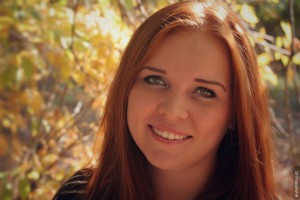 Guest Post
Guest Post
by Stephanie Norman
If you ask a sentimental woman who the perfect hero in fiction is, you’ll instantly hear the name Mr. Darcy. Most men, on the other hand, would choose Tyler Durden as the character who gets close to the perfect hero. These are two extreme choices, but they have something in common: they are imperfect. Mr. Darcy is really proud; he is a character who would annoy most women in reality. Durden is far from perfect, too. He is mysterious and weird, but incredibly charismatic at the same time.
There is only one conclusion we can draw when analyzing the most notable heroes from literary fiction: they are not a reflection of our idea of the ideal human being. Keeping that in mind, here are some important hints that tell you what readers want in their “perfect” fictional hero:
1. If she is a woman, she is independent
People don’t like reading about women who respect their husbands and families so much that they don’t have their own personality. A literary heroine is fierce, independent, and a little dangerous. She sacrifices many things to help the people she loves, but she never sacrifices her beliefs.
Scarlett O’Hara is a great example of a properly balanced heroine in fiction. She is a remarkably talented leader and she is strong enough to make her dreams come true. She preserves her dignity through poverty and starvation, and she is still determined to make things change. That’s the kind of woman contemporary readers want to see.
2. A great literary hero is deeply flawed
Do you know what happens when a woman meets the ideal man? Although he is gorgeous, rich, respectable, and kind, he becomes boring at one point or another. Everyone loves bad boys. This doesn’t mean you should turn your hero into a villain; it only means that you need to add the right dose of flaws that would keep a woman interested.
Stavrogin, Gatsby, Durden, Atticus Finch, Holmes… the list of imperfect heroes is endless. All of them are close to self-destruction throughout the novels. However, they still possess enough grandeur that makes every reader cheer for them.
3. A hero needs some tragedy
A strong character in fiction needs motivation to show his true strength. That motive usually comes in the form of personal struggles, an identity crisis, or a terrible tragedy.
Jane Eyre was poor, plain, and obscure. That’s what makes her so strong and believable. Holden Caulfield’s appeal comes from his disillusioned youth and the anger he is dealing with. The hypocrisy around him turns Caulfield into a great literary hero; he is respectful and caring when true values are in question.
4. He reflects humanity
Regardless of the flaws that add appeal to his character, the perfect hero is still a reflection of good. He may be strong, selfless, and kind, and he has to make a change in people’s lives. It’s important not to make a character completely perfect, because that will make him less believable.
When you’re wondering how to perfect the leading character of your current project, keep this in mind: those flawless people from superhero comics and fairy tales don’t work, unless you’re aiming for satire. A great hero in fiction is well-balanced. He is bad, but he also shows remarkable greatness. He reflects humanity in a realistic way.
5. The hero looks like people you admire
Have you ever met a woman who is the ideal mother? Probably not. Mothers are sometimes impatient and they don’t notice all the small achievements their children make. Sometimes they can be harsh, but most of them are heroines nonetheless.
Your favorite person of all-time can easily serve as foundation for a good hero in fiction. Think of all things you love about him, but don’t neglect his quirks and shortcomings. You’ll certainly develop a believable character when you base his personality and actions on people you know.
Observe, Conceptualize, and Take an Unexpected Direction!
There is one word that encompasses our impressions about literary masterpieces: unexpected! We never know what the characters are going to do. Take your time to analyze great heroes from fiction and think of your own concept based on the five tips above. However, you should always leave space for an unexpected turn. That’s what will make your piece memorable.
Stephanie Norman is from Sydney and has been a contributing blogger and professional writer for more than four years. She writes creative content covering content marketing, writing, and inspirational issues. She is a freelancer for AustralianWritings.com. You can follow her at Facebook and Google+.

Thoroughly enjoyed reading your post, Stephanie. Pinned and shared.
Thank you!
It is a great pleasure to read this!
Best wishes!
Great post and very helpful to be reminded of these important points.
Hello!
I am very glad to know that my tips can be helpful and interesting for readers of this great website!
Thank you!
All the best,
Stephanie
Great to meet a fellow Aussie, even if you are from Sydney instead of Melbourne. 😀
And it’s true, a hero almost has to be bad to be good! My favourite is Sydney Carton from A Tale of Two Cities. Meanwhile, the perfect villain has to be just a little bit good, or at least drop dead gorgeous… -cough- I’m reminded of Loki in the current crop of cartoon adaptations. He’s both sexy and ambiguous if not actually ‘good’.
Great to meet you, too!
Yeah! Sydney Carton was really ideal bad-good hero.
As for me, the hero is interesting when he has really controversial character!
Thank you for your feedback!
Best regards,
Stephanie
Thanks. Now I have to rethink my next hero. He’s just too nice!
This oughta be fun.